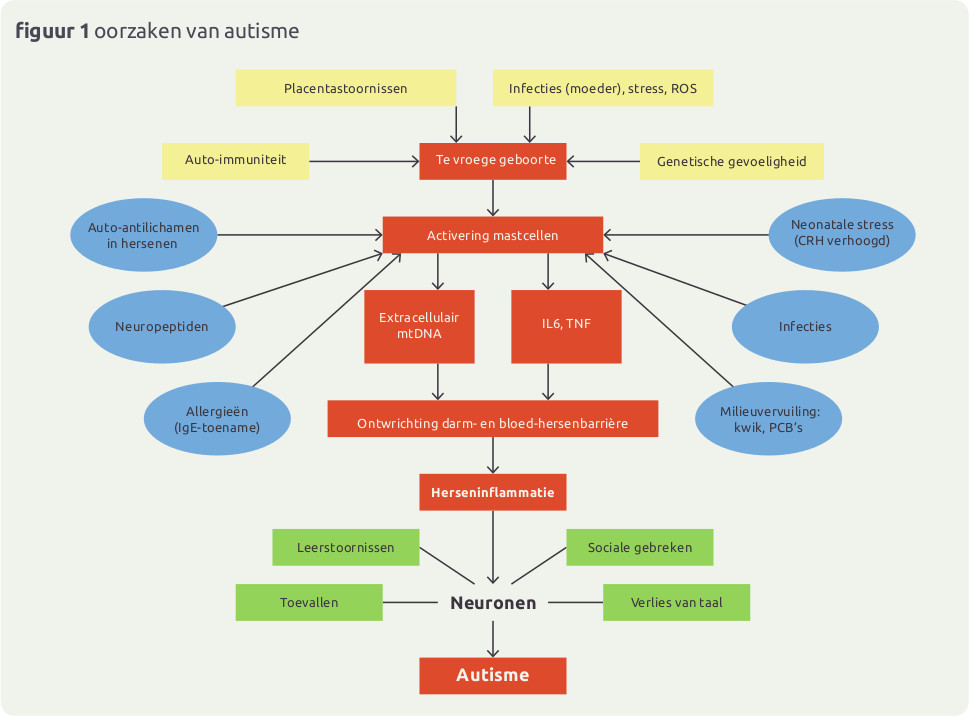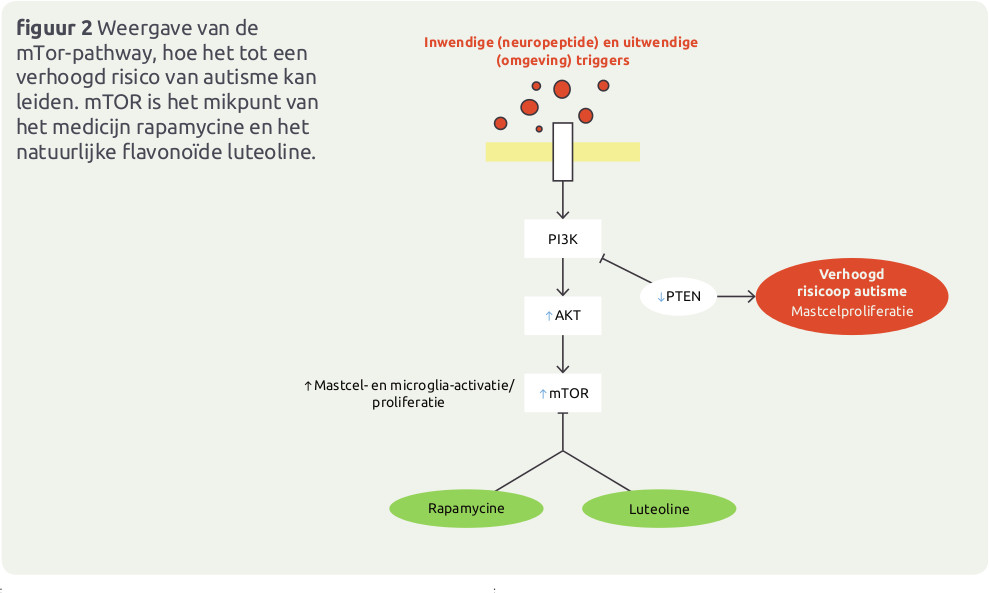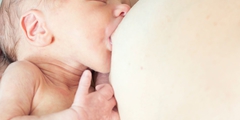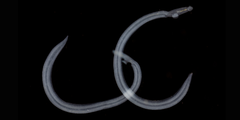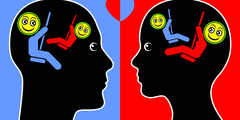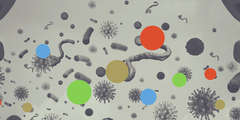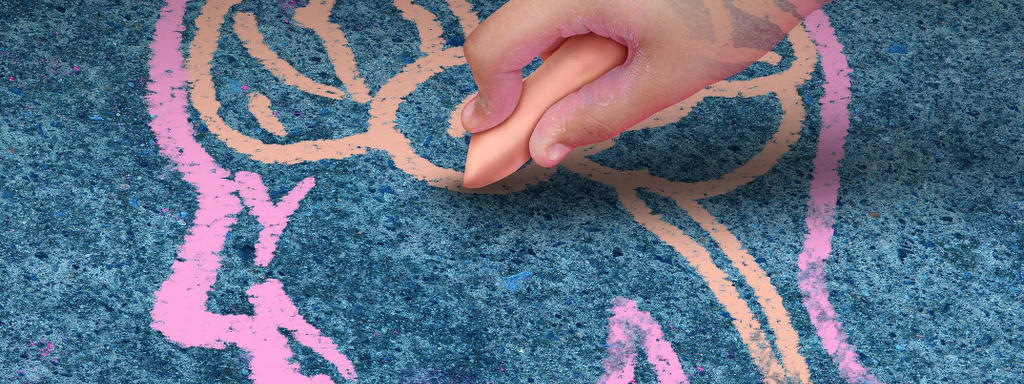
Autisme, vroeger nauwelijks bekend, is booming: de incidentiecijfers zouden nu variëren van 1 tot 4 %. Eén kind op 25 zou autisme hebben … Met een explosieve stijging de laatste decennia, waarvan het einde nog niet in zicht is?
De medische literatuur bevestigt dat ASD twee generaties terug een eerder zeldzaam voorkomende psychische aandoening was. Nu is het dagelijkse kost …
Beste bezoeker, u heeft geen toegang.
Enkel (web)abonnees hebben toegang tot tijdschriftartikelen. Het webabonnement is nog in de maak.
U kunt zich wel alvast (gratis) registreren en tal van andere webartikelen raadplegen!
Auteur
Trefwoorden:
Verschenen in
Referenties
Centers for Disease Control and Prevention. Prevalence of autism spectrum disorders--Autism and Developmental Disabilities Monitoring Network, 14 sites, United States, 2008. MMWR Surveill Summ. 2012 Mar 30;61(3):1-19.
Demicheli V, Rivetti A, Debalini MG, Di Pietrantonj C. Vaccines for measles, mumps and rubella in children. Cochrane Database Syst Rev. 2012 Feb 15;2:CD004407.
Young HA, Geier DA, Geier MR. Thimerosal exposure in infants and neurodevelopmental disorders: An assessment of computerized medical records in the Vaccine Safety Datalink. L Neurol Sci 2008; 271:110-8.
Durkin MS, et al. (2010) Socioeconomic inequality in the prevalence of autism spectrum disorder: evidence from a U.S. cross-sectional study. PloS one 5(7):e11551
Durkin MS et al. Socioeconomic inequality in the prevalence of autism spectrum disorder: evidence from a U.S. cross-sectional study. PLoS One. 2010 Jul 12;5(7):e11551.
Gentile I, Zappulo E, Militerni R, Pascotto A, Borgia G, Bravaccio C. Etiopathogenesis of autism spectrum disorders: Fitting the pieces of the puzzle together. Med Hypotheses. 2013 Apr 24.
Walker HB. A true case story. Microb Ecol Health Dis. 2012 Aug 24;23.
Walker SJ, Fortunato J, Gonzalez LG, Krigsman A. Identification of Unique Gene Expression Profile in Children with Regressive Autism Spectrum Disorder (ASD) and Ileocolitis. PLOS ONE March 8, 2013, available online at: http://dx.plos.org/10.1371/journal.pone.0058058
Geier D.A., Kern J.K., Geier M.R. A prospective cross-sectional cohort assessment of health, physical, and behavioral problems in autism spectrum disorders. Maedica (Buchar) 2012;7:193–200.
Stefanatos G.A. Regression in autistic spectrum disorders. Neuropsych. Rev. 2008;18:305–319.
Geier DA, Kern JK, Garver CR, Adams JB, Audhya T, Nataf R, Geier MR. Biomarkers of environmental toxicity and susceptibility in autism. J Neurol Sci. 2009 May 15;280(1-2):101-8.
Gentile I et al. Response to measles-mumps-rubella vaccine in children with autism spectrum disorders. In Vivo. 2013 May-Jun;27(3):377-82.
Theoharides TC, Asadi S, Patel AB. Focal brain inflammation and autism. J Neuroinflammation. 2013 Apr 9;10:46.
Theoharides TC, Zhang B. Neuro-inflammation, blood-brain barrier, seizures and autism. J Neuroinflammation. 2011 Nov 30;8:168.
Theoharides TC, Asadi S, Patel AB. Focal brain inflammation and autism. J Neuroinflammation. 2013 Apr 9;10:46.
Angelidou A et al. Perinatal stress, brain inflammation and risk of autism-review and proposal. BMC Pediatr. 2012 Jul 2;12:89.
Theoharides TC et al. Mast cell activation and autism. Biochim Biophys Acta. 2012 Jan;1822(1):34-41.
Zhang B et al. Stimulated human mast cells secrete mitochondrial components that have autocrine and paracrine inflammatory actions. PLoS One. 2012;7(12):e49767.
Theoharides TC, Asadi S, Panagiotidou S, Weng Z. The "missing link" in autoimmunity and autism: extracellular mitochondrial components secreted from activated live mast cells. Autoimmun Rev. 2013 Oct;12(12):1136-42.
Youle RJ, van der Bliek AM. Mitochondrial Fission, Fusion, and Stress Science 31 August 2012; 337(6098):1062-65.
Zhang B et al. Mitochondrial DNA and anti-mitochondrial antibodies in serum of autistic children. J Neuroinflammation. 2010 Nov 17;7:80.
Rossignol DA, Frye RE. Mitochondrial dysfunction in autism spectrum disorders: a systematic review and meta-analysis. Mol Psychiatry. 2012 Mar;17(3):290-314
Shoffner J et al. Fever plus mitochondrial disease could be risk factors for autistic regression. J Child Neurol. 2010 Apr;25(4):429-34.
Megremi AS. Is fever a predictive factor in the autism spectrum disorders? Med Hypotheses. 2013 Apr;80(4):391-8
Sanders DS, Aziz I. Non celiac wheat sensitivity: Separating the wheat from the chaff. Am. J.Gastroenterol. 2012; 107:1908–1912.
Sapone A, Bai JC, Ciacci C, Dolinsek J, Green PH, Hadjivassiliou M, Kaukinen K,Rostami K, Sanders DS, Schumann M et al. Spectrum of gluten-related disorders: Consensus on new nomenclature and classification. BMC Med. 2012; 10:13.
Tanpowpong P, Broder-Fingert S, Katz AJ, Camargo CA. Predictors of gluten avoidance and implementation of a gluten-free diet in children and adolescents without confirmed celiac disease. J Pediatr 2012, 161:471–475.
Batista IC, Gandolfi L, Nobrega YK, Almeida RC, Almeida LM, Campos Junior D, Marcason W. What is the current status of research concerning use of a gluten-free, casein-free diet for children diagnosed with autism? J Am Diet Assoc. 2009, 109:572.
De Magistris L et al. Alterations of the intestinal barrier in patients with autism spectrum disorders and in their first-degree relatives. J Pediatr Gastroenterol Nutr 2010, 51;418–424.
Robertson MA et al. Intestinal permeability and glucagon-like peptide-2 in children with autism: A controlled pilot study. J Autism Dev Disord 2008; 38:1066–1071.
Lau NM et al. Markers of celiac disease and gluten sensitivity in children with autism. PLoS One 2013, 8:e66155.
De Magistris L et al. Antibodies against food antigens in patients with autistic spectrum disorders. BioMed. Res. Int. 2013; 729349.
Whiteley P et al. The ScanBrit randomised, controlled, single-blind study of a gluten- and casein-free dietary intervention for children with autism spectrum disorders. Nutr Neurosci 2010; 13:87–100.
Wasilewska J, Jarocka-Cyrta E, Kaczmarski M. Gastrointestinal abnormalities in children with autism. Pol Merkur Lekarski. 2009 Jul;27(157):40-3.
Cave SF. The history of vaccinations in the light of the autism epidemic. Altern Ther Health Med. 2008 Nov-Dec;14(6):54-7.
Geier DA, Geier MR. A meta-analysis epidemiological assessment of neurodevelopmental disorders following vaccines administered from 1994 through 2000 in the United States. Neuro Endocrinol Lett. 2006 Aug;27(4):401-13.
Cohly HH, Panja A. Immunological findings in autism. Int Rev Neurobiol. 2005;71:317-41.
Lubach GR, Coe CL, Ershler WB. Effects of early rearing environment on immune responses of infant rhesus monkeys. Brain Behav Immun. 1995 Mar;9(1):31-46.
Kraft JD et al.Neonatal macrophages express elevated levels of interleukin-27 that oppose immune responses. Immunology. 2013 Aug;139(4):484-93.
Blaylock RL. A possible central mechanism in autism spectrum disorders, part 1. Altern Ther Health Med. 2008 Nov-Dec;14(6):46-53.
Blaylock RL, Strunecka A. Immune-glutamatergic dysfunction as a central mechanism of the autism spectrum disorders. Curr Med Chem. 2009;16(2):157-70.
Takeuchi Y. Neurotransmission in developmental disorders. No To Hattatsu. 2008 Nov;40(6):451-5.
Jefferson T et al, Unintended events following immunization with MMR: a systematic review. Vaccine 21 (2003) 3954–3960
Vojdani A, Pangborn JB, Vojdani E, Cooper EL. Infections, toxic chemicals and dietary peptides binding to lymphocyte receptors and tissue enzymes are major instigators of autoimmunity in autism. Int J Immunopathol Pharmacol. 2003 Sep-Dec;16(3):189-99.
Vojdani A et al. Heat shock protein and gliadin peptide promote development of peptidase antibodies in children with autism and patients with autoimmune disease. Clin Diagn Lab Immunol. 2004 May;11(3):515-24.
Blaylock RL, Strunecka A. Immune-glutamatergic dysfunction as a central mechanism of the autism spectrum disorders. Curr Med Chem. 2009;16(2):157-70.
Richmand BJ. Hypothesis: conjugate vaccines may predispose children to autism spectrum disorders. Med Hypotheses. 2011 Dec;77(6):940-7.
Cecinati V, Principi N, Brescia L, Giordano P, Esposito S. Vaccine administration and the development of immune thrombocytopenic purpura in children. Hum Vaccin Immunother. 2013 May;9(5):1158-62
Tafuri S, Martinelli D, Prato R, Germinario C. From the struggle for freedom to the denial of evidence: history of the anti-vaccination movements in Europe. Ann Ig. 2011 Mar-Apr;23(2):93-9.
Mutter J, Naumann J, Schneider R, Walach H, Haley B. Mercury and autism: accelerating evidence? Neuro Endocrinol Lett. 2005 Oct;26(5):439-46. Review.
Desoto MC, Hitlan RT. Blood levels of mercury are related to diagnosis of autism: a reanalysis of an important data set. J Child Neurol 2007;22:1308–11.
Geier DA, Hooker BS, Kern JK, King PG, Sykes LK, Geier MR. A two-phase study evaluating the relationship between Thimerosal-containing vaccine administration and the risk for an autism spectrum disorder diagnosis in the United States. Transl Neurodegener. 2013 Dec 19;2(1):25.
Geier DA, Geier MR. A prospective assessment of porphyrins in autistic disorders: a potential marker for heavy metal exposure. Neurotox Res 2006;10:57–64.
Geier DA, Geier MR. A case series of children with apparent mercury toxic encephalopathies manifesting with clinical symptoms of regressive autistic disorders. J Toxicol Environ Health A 2007;70:837–51.
GeierDA,GeierMR. A prospective study of mercury toxicity biomarkers in autistic spectrum disorders. J Toxicol Environ Health A 2007;70:1723–30.
Geier D, Geier MR. Neurodevelopmental disorders following thimerosal-containing childhood immunizations: a follow-up analysis. Int J Toxicol. 2004 Nov-Dec;23(6):369-76.
Geier DA, Geier MR. An evaluation of the effects of thimerosal on neurodevelopmental disorders reported following DTP and Hib vaccines in comparison to DTPH vaccine in the United States. J Toxicol Environ Health A. 2006 Aug;69(15):1481-95.
Jedrychowski W, Jankowski J, Flak E, Skarupa A, Mroz E, Sochacka-Tatara E, et al. Effects of exposure to mercury on cognitive and psychomotor function in one-year-old infants: epidemiologic cohort study in Poland. Ann Epidemiol 2006;16:439–47.
Palmer RF, Blanchard S, Stein Z, Mandell D, Miller C. Environmental mercury release, special education rates, and autism disorder: an ecological study of Texas. Health Place 2006;12:203–9.
Holmes AS, Blaxill MF, Haley BE. Reduced levels of mercury in First baby haircuts of autistic children. Int J Toxicol 2003;22:277–85.
Geier DA, Hooker BS et al. A two-phase study evaluating the relationship between Thimerosal-containing vaccine administration and the risk for an autism spectrum disorder diagnosis in the United States. Transl Neurodegener. 2013 Dec 19;2(1):25.
James SJ, Cutler P, Melnyk S, Jernigan S, Janak L, Gaylor DW, Neubrander JA. Metabolic biomarkers of increased oxidative stress and impaired methylation capacity in children with autism. Am. J. Clin. Nutr. 2004;80:1611–1617.
Kern JK, Waring RH, Ramsden DB, Grannemann BD, Garver CR, Trivedi MH. Abnormal Sulfation Chemistry in Autism. In: Columbus F., editor. Progress in Autism Research. Nova Science Publishers, Inc.; Hauppauge, NY, USA: 2004
Geier DA, Sykes LK, Geier MR. A review of Thimerosal (Merthiolate) and its ethylmercury breakdown product: specific historical considerations regarding safety and effectiveness. J Toxicol Environ Health B Crit Rev 2007;10:575–96.
Kern JK et al. Thimerosal exposure and the role of sulfation chemistry and thiol availability in autism. Int J Environ Res Public Health. 2013 Aug 20;10(8):3771-800.
Gu F, Chauhan V, Chauhan A. Impaired synthesis and antioxidant defense of glutathione in the cerebellum of autistic subjects: alterations in the activities and protein expression of glutathione-related enzymes. Free Radic Biol Med. 2013 Dec;65:488-96
Main PA, Angley MT, O'Doherty CE, Thomas P, Fenech M. The potential role of the antioxidant and detoxification properties of glutathione in autism spectrum disorders: a systematic review and meta-analysis. Nutr Metab (Lond). 2012 Apr 24;9:35.
Geier DA, Kern JK, Garver CR, Adams JB, Audhya T, Geier MR. A prospective study of transsulfuration biomarkers in autistic disorders. Neurochem Res. 2009 Feb;34(2):386-93.
Geier DA, Geier MR. A clinical and laboratory evaluation of methionine cycle-transsulfuration and androgen pathway markers in children with autistic disorders. Horm Res 2006;66:182–8.
Serajee FJ, Nabi R, Zhong H, Hug M. Polymorphisms in xenobiotic metabolism genes and autism. J Child Neurol 2004;19:413–7.
Williams TA, Mars AE, Buyske SG, Stenroos ES, Wang R, Factura-Santiago MF, et al. Risk of autistic disorder in affected offspring of mothers with a glutathione S-transferase P1 haplotype. Arch Pediatr Adolesc Med 2007;161:356–61.
James SJ, Melnyk S, Jernigan S, Hubanks A, Rose S, Gaylor DW. Abnormal transmethylation/transsulfuration metabolism and DNA hypomethylation among parents of children with autism. J Autism Dev Disord. 2008 Nov;38(10):1966-75.
Blaurock-Busch E et al. Toxic Metals and Essential Elements in Hair and Severity of Symptoms among Children with Autism. Maedica (Buchar). 2012 Jan;7(1):38-48.
Al-Yafee YA, Al-Ayadhi LY, Haq SH, El-Ansary AK. Novel metabolic biomarkers related to sulfur-dependent detoxification pathways in autistic patients of Saudi Arabia.BMC Neurol. 2011 Nov 4;11:139.
Blaucok-Busch E, Amin OR, Dessoki HH, Rabah T. Efficacy of DMSA Therapy in a Sample of Arab Children with Autistic Spectrum Disorder. Maedica (Buchar). 2012 Sep;7(3):214-21.
James SJ, Rose S, Melnyk S, Jernigan S, Blossom S, Pavliv O, Gaylor DW. Cellular and mitochondrial glutathione redox imbalance in lymphoblastoid cells derived from children with autism. FASEB J. 2009 Aug;23(8):2374-83.
Sajdel-Sulkowska EM, Lipinski B, Windom H, Audhya T, McGinnis W. Oxidative stress in autism: elevated cerebellar 3-nitrotyrosine levels. Am J Biochem Biotechnol 2008;4:73–84.
Parellada M, Moreno C, Mac-Dowell K, Leza JC, Giraldez M, Bailón C, Castro C, Miranda-Azpiazu P, Fraguas D, Arango C. Plasma antioxidant capacity is reduced in Asperger syndrome. J Psychiatr Res. 2012 Mar;46(3):394-401.
Yasuda H, Yasuda Y, Tsutsui . Estimation of autistic children by metallomics analysis. Sci Rep. 2013;3:1199.
Lakshmi Priya MD, Geetha A. Level of trace elements (copper, zinc, magnesium and selenium) and toxic elements (lead and mercury) in the hair and nail of children with autism. Biol Trace Elem Res. 2011 Aug;142(2):148-58.
Adams JB et al. Toxicological status of children with autism vs. neurotypical children and the association with autism severity. Biol Trace Elem Res. 2013 Feb;151(2):171-80.
Al-Farsi YM et al. Levels of heavy metals and essential minerals in hair samples of children with autism in Oman: a case-control study. Biol Trace Elem Res. 2013 Feb;151(2):181-6.
Blaurock-Busch E, Amin OR, Dessoki HH, Rabah T. Toxic Metals and Essential Elements in Hair and Severity of Symptoms among Children with Autism. Maedica (Buchar). 2012 Jan;7(1):38-48.
Gong ZL, Luo CM, Wang L, Shen L, Wei F, Tong RJ, Liu Y. Serum 25-hydroxyvitamin D levels in Chinese children with autism spectrum disorders. Neuroreport. 2013 Oct 1. [Epub ahead of print].
Deth R, Muratore C, Benzecry J, Power-Charnitsky VA, Waly M. How environmental and genetic factors combine to cause autism: A redox/methylation hypothesis. Neurotoxicology. 2008 Jan;29(1):190-201.

